June’s arrived, which usually means that I’ve accomplished about as much as I can hope to with my garden for the year, except maintenance and any non-planting work I want to do.
When we moved in to our current home, most of the yard was in pretty shabby condition. A lot of it still is, because I can only handle one major area of improvement each season, both in terms of the energy and labor-time I can spare and in terms of the cost of materials and plants.
My first target was an area on one side of the front lawn where there was a single lonely pine tree and some scruffy grass that eventually gave way to some pachysandra, English ivy and a chaotic jumble of forsythia underneath a big maple and a magnolia. All of our trees were in bad shape, with some dangerous limbs, so we had a big trimming right when we moved in. I had both of the big pines cut down: I’ve never liked them much as isolated trees mixed in with maple, oak and ash in Eastern woodlands.
Over three years, I’ve done a lot of planting where the smaller pine in the front had been. First off, right where the pine had been, I planted three dwarf peach trees and three butterfly bushes in a circle around a birdhouse on a pole, with a few container plants scattered around that area. Everything has grown in fairly well.
The next spring I built a raised bed on the north side of the peach trees and planted a lot of lavender with a bit of tickseed and sedum mixed in. On the south side of the circle of peaches and butterfly bushes, I planted a mix of ornamental grasses and dogwoods (yellow-twig and red-twig), with a cheap bench overlooking the area. All of this has grown in pretty well, with the exception of some Japanese bloodgrass.
Late last summer, I began to build a rock border around the raised bed of lavender, and that’s where I planted this spring: thyme, lemon balm, heliotrope, rosemary, several types of mint, blanket flowers, beardstongue. Mostly that’s doing ok, though I’m having some problems with drainage and weeds. If I can afford the stone, I’ll finish building the small border wall later this summer, which I mean to take all the way down the property line into the shaded area where the maples and magnolia are.
I also plant a vegetable garden each year. For once I managed to get some peas in: March is usually so busy, and often there isn’t a good day to plant on the weekends where I have the time and the energy.
The main point is to get tomatoes and beans, though. For once this year I also got some sunflowers to germinate, though some kind of insect destroyed about half of them after they’d popped up above ground.
I had to replant a lot of the lawn on the west side of the house, as some kind of grass-like weed pretty much destroyed that whole area late last summer. I don’t really like dealing with lawns. They’re a hassle. On the other hand, I like the open green space they provide.
I’ve got a dead dogwood to take down myself later this summer, and a lot of fallen limbs to break down into firewood at some point. Another long-term goal I have is to get a good chipper/shredder so I can make my own mulch each year (I have a huge pile of deadwood in the most neglected corner of the backyard).
Our sour cherries and high-bush blueberries are coming along nicely, though we usually only get about one picking of blueberries before the birds strip the plants bare. (Nets don’t help: they just get under the nets, eat their fill and then freak out and panic because they’ve forgotten how to get out.)
The ambitious goal, if I can finish the wall, is to prepare the area in heavy shade for ferns, hostas and some other shade plants, and to build a treehouse in the same area, on one of our stronger maples. Getting rid of the English ivy and forsythia in this area promises to be an ordeal, though.
Obviously, I enjoy gardening. I don’t have that romantic sense that it brings me closer to nature, or any of that kind of thing. In fact, it mostly makes me grateful to live in a late-industrial civilization, because it teaches me more potently than any scholarly study might about the hard limits faced by any preindustrial agrarian society. We have so much tree cover in our yard that there are only a few patches where I can grow vegetables. I think that next year I will have to leave the best area for our vegetable garden largely fallow, as I’ve seen declining yields in the current patch, even with some mineral amendments and a lot of the compost from my own piles tilled in before planting. If I had to live off my own land, I’d be lucky to achieve subsistence even if I cut down all my trees and converted all of my yard to food production.
I do like having herbs and vegetables close at hand all summer, though.
It’s sobering to see how capricious any vegetable is, and how difficult it is to get many to germinate. Moreover, I’ve largely settled for growing vegetables that taste distinctly better from a home garden (tomatoes, beans) but that also don’t seem too interesting to squirrels, woodchucks and deer. I learned the hard way that whatever they want, they get, no matter what you do to stop them.
Pretty much everything I do in the garden is done “organically”, save for whatever the nurseries I buy from might do to grow the plants, but again, that’s not because of some profound philosophical commitment on my part. I do it this way because it’s less money and makes good sense, and because I have a phobia about hiring people to mess around with my own stuff. Why not stockpile deadwood and have compost? It seems much weirder to me to haul all the stuff to the front yard and call someone to cart it away. I don’t want a lawn service because I’m cheap, because I don’t want strangers all over my lawn once a week, because I don’t like the look of heavily treated lawns. So yes, my lawn has more weeds, is often overgrown, and has patchy areas. I’m ok with that. I’m going to run into some long-term problems with my most ambitious plans: I want to eventually build another rock garden with a water element in the backyard, but this time I want to use rocks that I couldn’t handle with my own muscles to build part of it. It should tell you something about my monomania that I’d almost rather rent a little bearcat to get the bigger rocks in place myself and dig the area for the liner.

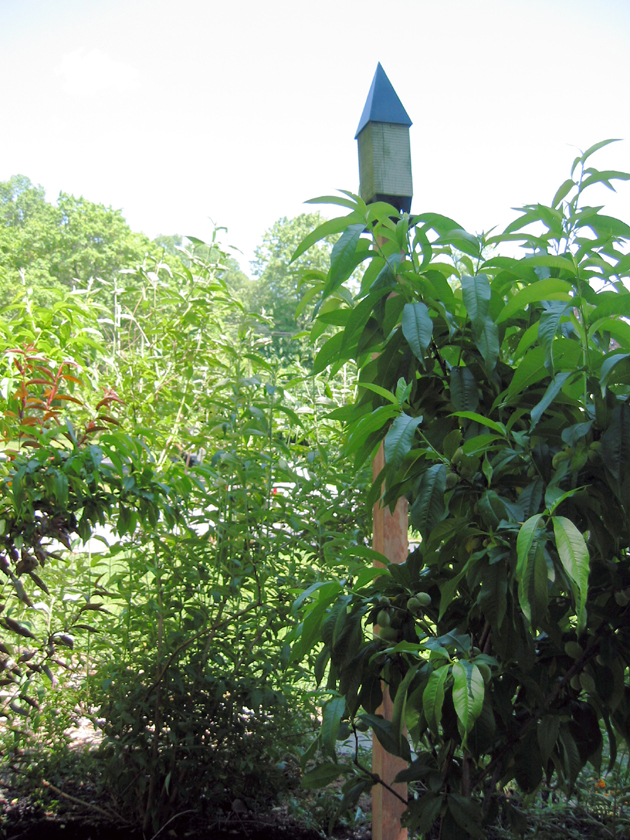

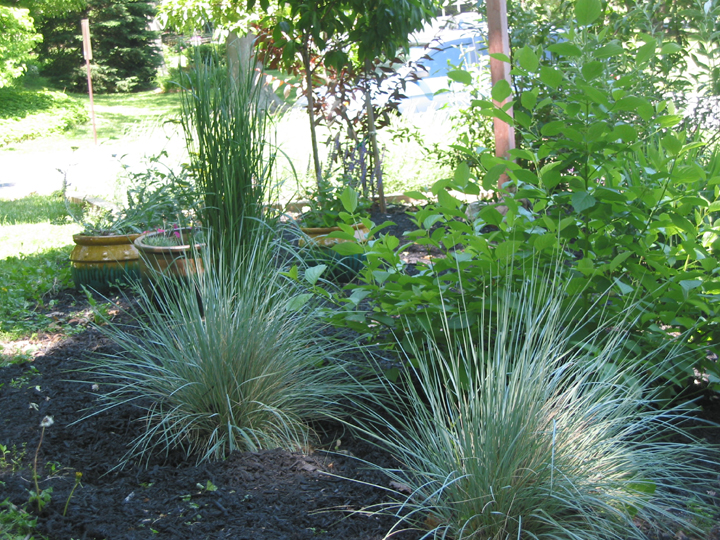
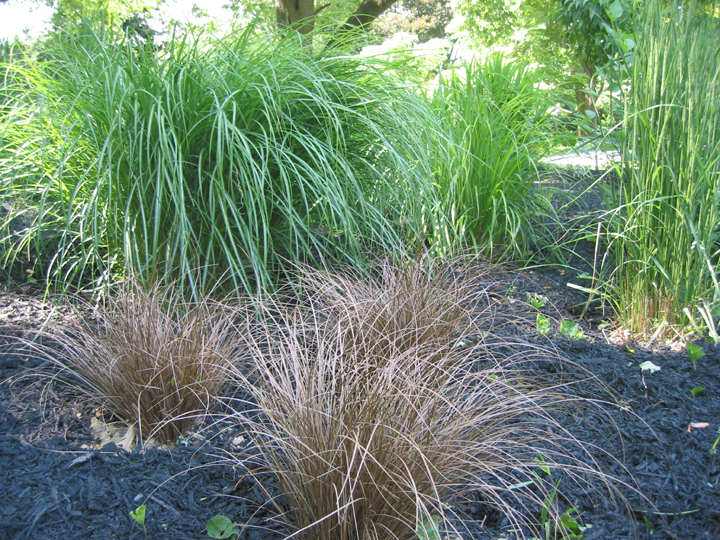
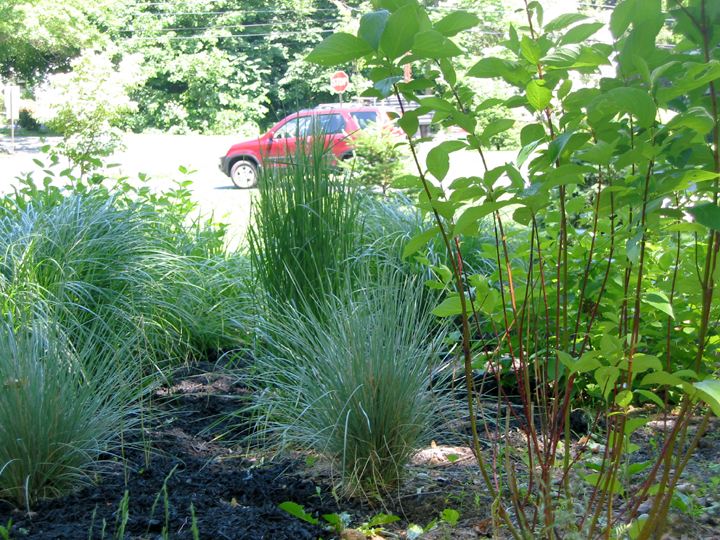
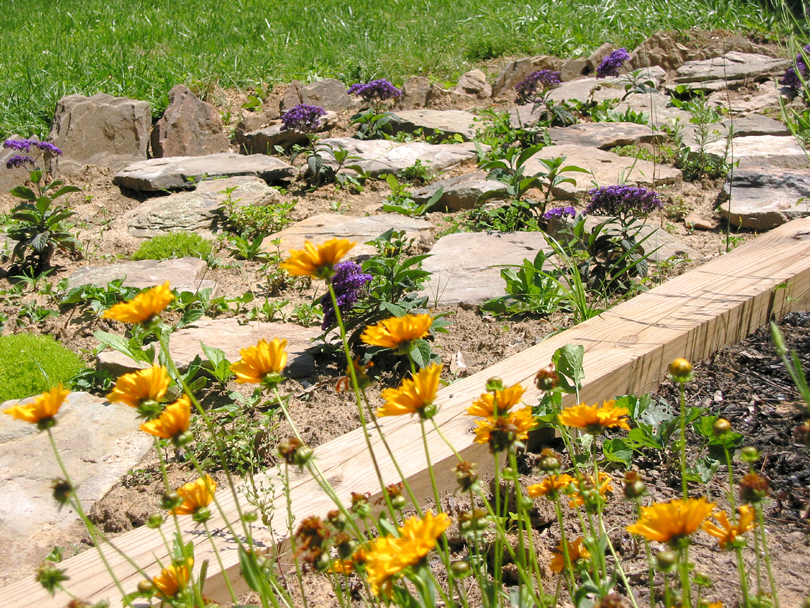
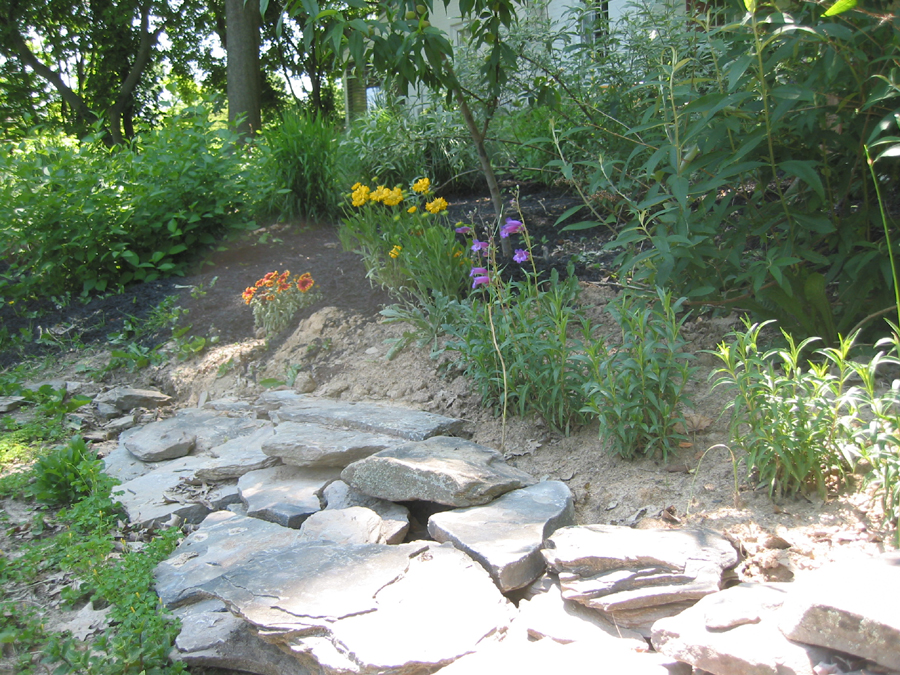

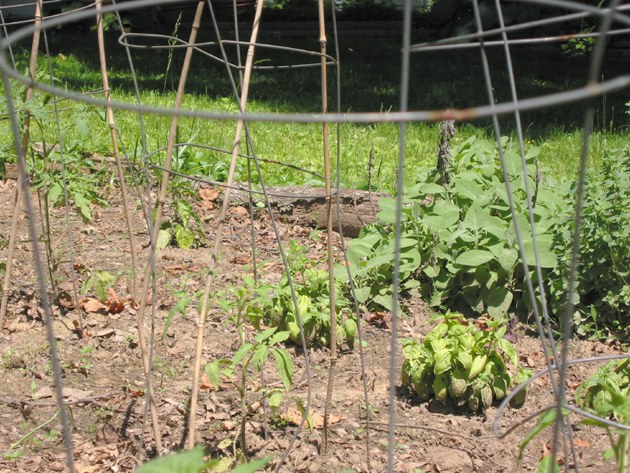

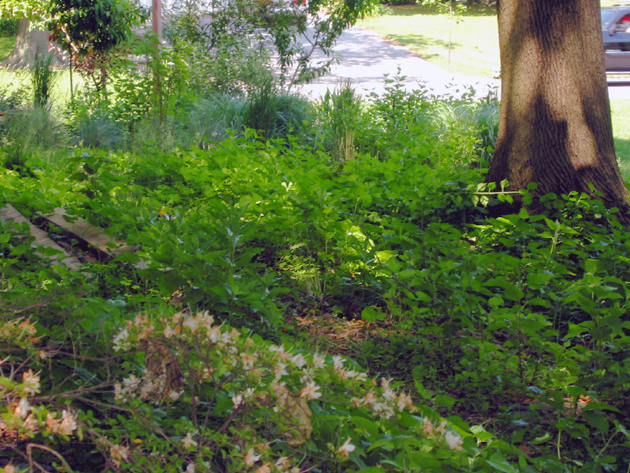

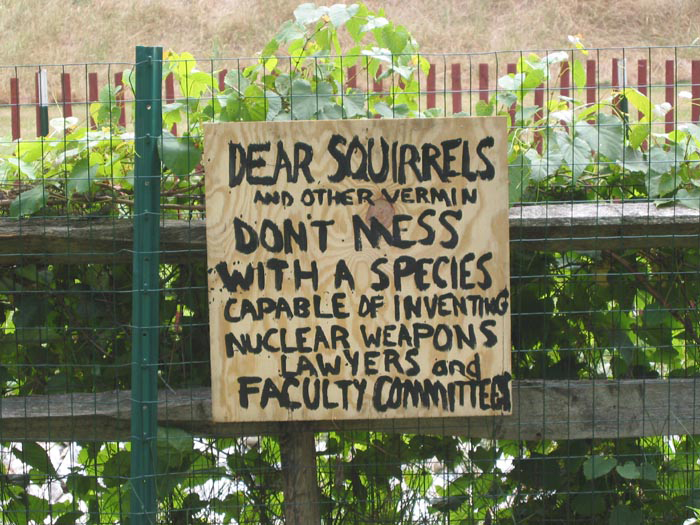
My mother collects rocks everywhere she goes – big rocks, the kind you need two people to lift – which meant that road trips out west mostly involved her biting her fingernails about all the rocks we were leaving behind. Her current obsession, though, is collecting busted up concrete to build into rock walls and paths in the garden. It looks pretty good, too, though it means their little hatchback is always full of both dog hair and concrete dust.
I’ve seen declining yields in the current patch, even with some mineral amendments and a lot of the compost from my own piles tilled in before planting.
You need a chicken tractor! Not that you shouldn’t leave it fallow too.
I took a big rock out of a nearby streambed last summer and carted it up a trail in a backpack. I don’t think it was the smartest thing I’ve done. I also got a friggen huge rock out of the garden this summer, and pretty much concluded that it was the largest possible rock I could personally handle with handtools.
That chicken tractor is awesome. My daughter keeps arguing that we could turn the woodpile area of the backyard into a chicken and/or goat pen. I’d rather put in a blackberry bramble…
I’m astonished. That looks gorgeous; if only I had the sort of imagination that can look at an empty lawn and see that sort of thing. As it is, I figure so long as the grass is vaguely green-ish, and the trees haven’t been choked with weeds, I’m ahead of the game.
I think you’re underestimating the charms of both chickens and goats. The Atlas of American Artisan Cheese is full of people who started with one goat and ended up with a goat dairy, and my girlfriend swears that her life will be incomplete if she does not have her own chickens one day. In fact, if you get a chicken tractor you can have both the blackberry bramble and the chickens, because the chickens will live around the lawn (and the garden until you’ve planted).
We spent some time with two young dairy goats last summer, and I agree they have quite a fun personality, very endearing. We had a chicken when I was a teenager and I wouldn’t say the same for the chicken.
I’m impressed that you get the beans by the deer. My beans would disappear by the time they were about 3 inches high. I settled for herbs, greens, and tomatoes, which appear to not taste good to deer.
And have you ever had fruit from your peaches? We managed fruit one year from a tree, but the other years the squirrels would pick the peaches before they were ripe, take one bite, and say “Oh, that’s not ripe.” and leave them on the ground, so we had to confront the vandalism.
They don’t seem to want the beans, yeah. I’m not sure why. I plant royal purple beans: I suppose the color might put them off, though I have no idea whether deer identify possible forage by visual cues.
This is the first year the peaches appear to be producing good fruit–one of the three trees has a bumper crop on it. I’m hoping that the proximity of the trees to the street and foot traffic plus the relatively slender build of the trees is enough to inhibit squirrels going for them. But I’ve seen them do exactly what you describe with other things. I gave up on corn for that reason: they’d take the ears when they were teeny, decide that they didn’t want them after all, and so leave all these itty-bitty inedible corn cobs all over the place. Bastards.
The garden looks great. Since we moved back, my wife and I have been helping my mom in her garden and it’s been fun to watch it come together more each year.
I too find that gardening helps me sypathize with early agriculturalists. I also think about how different the vegetables we plant these days are from the creatures they started out as. The heirloom tomatoes we look forward to are great, not because they’re unaltered by humans, but because people shaped and selected them for tastyness rather than just yield and shippability.
Squirrels were considered edible in Louisiana when I grew up there. Just sayin.
Believe me, I’ve thought of sitting out in a blind and gunning the little bastards down any time they come within ten feet of the vegetables.
How ’bout strawberries & blueberries? Rabbits love the bark of the blueberries and the flowers of the strawberries, but I’ve not had problems with squirreles with my fruits. Blueberries are fairly self-reliant with little trimming required. As for squirrels … http://www.youtube.com/watch?v=hRR4bOquEKQ&feature=related
We have high-bush blueberries, and you’re right, squirrels don’t bother with them. Birds, unfortunately, are obsessed with them. I’ve never tried planting strawberries, though.
That is a great garden.
Random comments:
Soil doesn’t “wear out”–it runs out of certain things; my guess is that your good garden spot needs either lime or nitrogen–I’d do a soil test and figure out which. Nitrogen fertilizer is one of the really great inventions.
I’d definitely get chickens; they are scavenging omnivores, so you can feed them all your kitchen scraps except raw eggs and raw chicken. (They’ll eat those too, but you don’t want them to learn to.) Get 4-6 chickens, and you’ll have all the excellent fresh eggs you can eat and they’ll compost everything for you.
And you should definitely grow a few strawberries.
very much fun your post here.
I’m curious – why did you plant the dwarf fruit trees and the butterfly bushes together?
if you’d rather go organic to help feed your soil then compost tea is the miracle working powerhouse method
i like steve diver’s intro:
http://www.dwarffruittrees.org/composting-for-dwarf-fruit-trees/what-is-compost-tea
and Elaine Ingraham as world soil expert at soilweb – though much harder to decipher.
chicken tractors are a really cool.